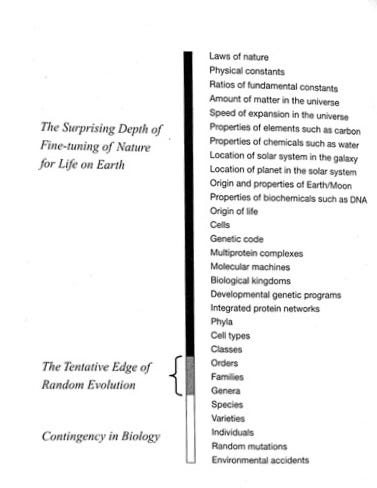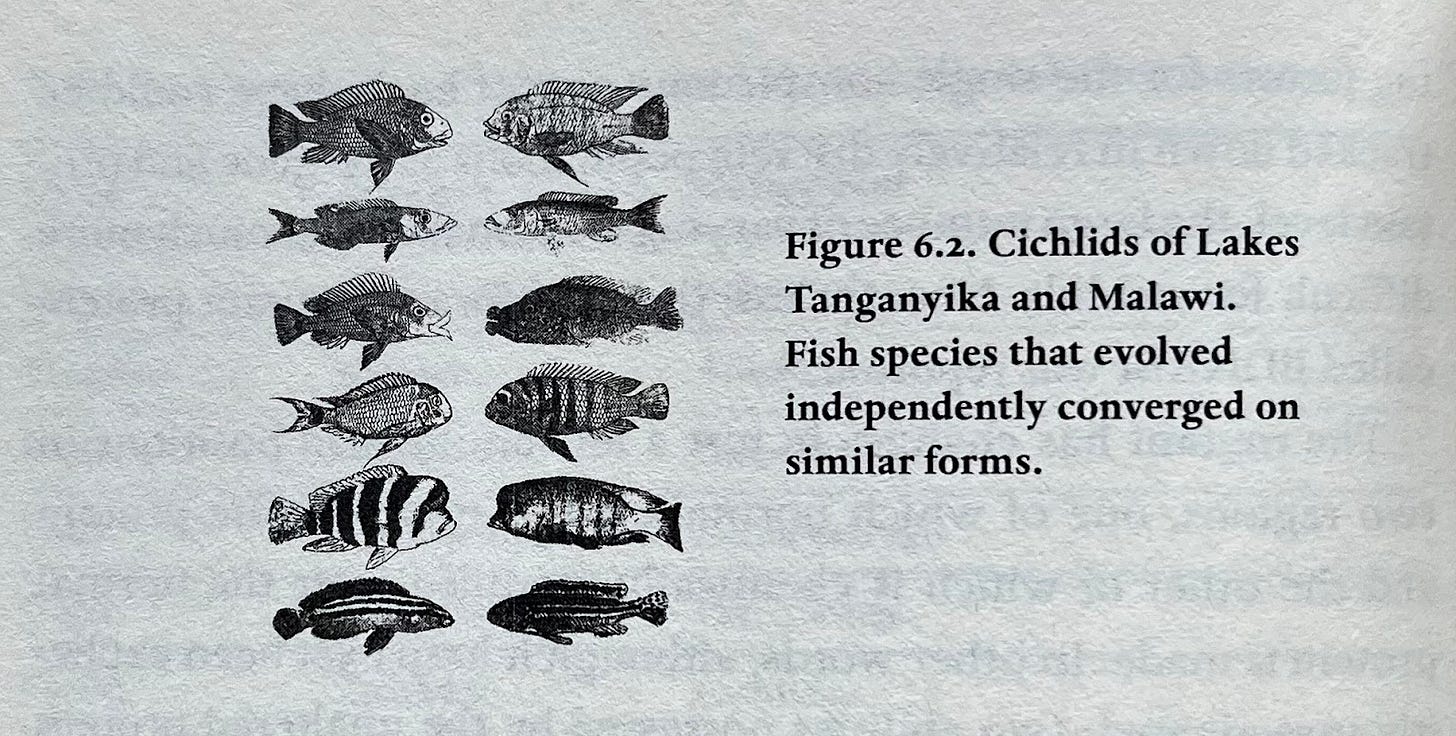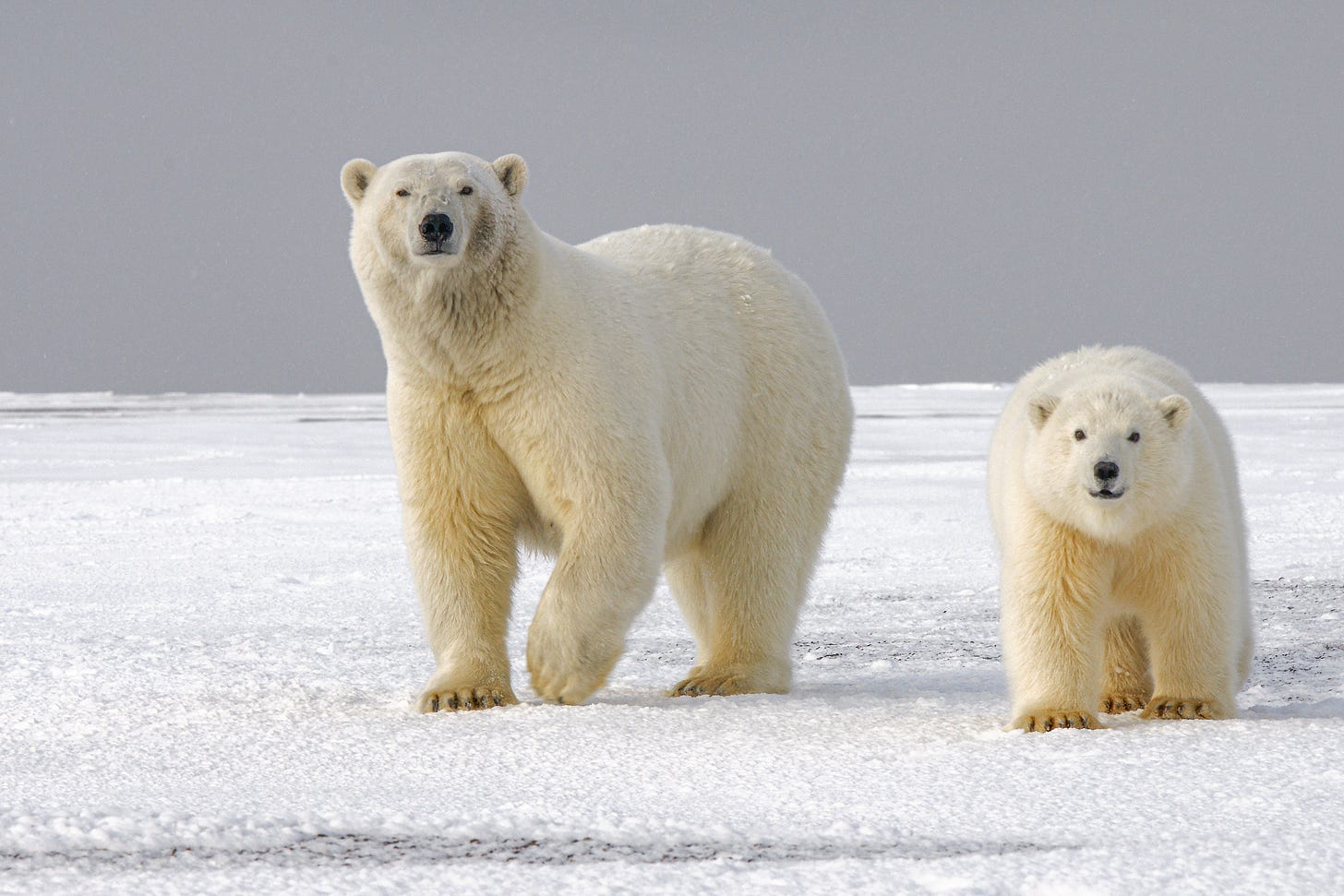Why Not Theistic Evolution? Part 3: Darwinism Is Devolution
Darwinian evolution is only capable of producing variations on a pre-existing design; every variation it produces is a corruption of an original genetic code, even if it is beneficial for survival.
Imagine a machine that produces and reproduces video games. An internal mechanism replicates the digital code of an existing game and spits out a copy of that game. The mechanism is quite reliable, but not perfect. Every so often it will change a command or a letter of programming language.
The machine also has a computerized video game tester. Each copy is delivered to the game tester, which judges the copy by a single play-through. This means that many errors in the digital copy are overlooked, and others that are encountered either do not interfere significantly or derail the test. If they derail the test, then the copy is scrapped and is not reproduced. If a copy passes the test of a single play-through, it is copied, and the process repeats.
If I take, for example, Madden, and put it in the video game replicator, over several generations of copies, many variations to the original code will be introduced. Those that are destructive of gameplay to a certain degree are destroyed with a certain frequency. Others are not sufficient to warrant destruction or are overlooked, again, in the testing process. Some variations are actually found to improve gameplay; such variations, though rare, may make every field goal a success or a particular player untackleable. The computerized game tester does not notice a problem with these, as these actually make gameplay easier.
Over time, many variations on the game will be produced. Most variations will be deleterious and will be destroyed. But several will be produced that may be noticeably distinct from the original. Of course, there are limits to variation. Given the programming of the original game, particular features and elements of the programming can only change so much before the game becomes unplayable. Likewise, even though the variations are more or less random, which variations are possible and are eventually produced will be determined by the nature of the original game and will be finite. You might say that the possible variations are given with the nature of the game; certain segments of code can be deleted or changed without entirely hampering gameplay, but this was determinable, in principle, beforehand.
In the case of the video game replicator, I do not think it would be controversial to say that, while many variations on Madden will be produced, no variation will turn out to be the game FIFA. (Madden is American football, FIFA is soccer.) Likewise, we can be under no illusions that the video game replicator could be credited as the creator or programmer of the game Madden, even if it, rather than a programmer, could be credited as the mechanism that produced a particular variation of Madden. Rather, to begin the process we needed a programmed game, not to mention a mechanism capable of replicating the programmed game.
The mechanism of reproducing with a random amount of variation, followed by testing, and survival of, well, the funnest is only capable of producing variations on a pre-existing program. What is more, every variation it produces is a corruption of the original code, even though some of those variations are innocuous enough or even beneficial to the game. If by no other means, we could determine which lines of code were corrupt by means of comparison with the original game. Beneficial variations would not be any less corruptions of this original code; some of them could be even pre-programmed into the code to lead to beneficial variations.
This illustration, while enjoyable and humorous, is a quite straightforward illustration of the process of random mutation and natural selection. The limits to the mechanism of random variation and testing illustrate the very limits there are to change by Darwinian mechanism in the realm of life. It also illustrates the thesis of Michael Behe’s latest book on evolution and intelligent design, Darwin Devolves, that Darwin’s mechanism does produce variation in biology, but not by evolution but by devolution. Likewise, there are real limits to biological change by Darwinian mechanism, which Behe argues occur at the biological level, not of the species, but of the family. While this admits variation at the level of genus and species, a discovery of Darwinian evolutionary science, I will argue that what this points to is not universal common ancestry but original, created kinds which are such as to allow from a certain amount of variation and speciation.
Table of Contents:
1. Evolution Does Occur
Essentialists hold that all the species we now see were created as such with no evolution. I argue that, on the contrary, evolution has occurred, by the Neo-Darwinian mechanism. The question is whether there is a limit to this kind of evolution, and if so, what it is.
2. “The Family Line”
Michael Behe has demonstrated in Darwin Devolves, third in his intelligent design trilogy, that the limit of Neo-Darwinian evolution is the third-lowest taxonomic level, the family. This means that variation can only occur at the level of species and genus, at least by an unguided Neo-Darwinian mechanism.
3. Evolution Is Devolution
Behe has also shown that the Neo-Darwinian evolution that does occur is de-volution, that is, the degradation of functional and pre-existing genetic code. Thus, evolution can explain variation within a biological family, largely based on corrupting or deleting genetic code. It cannot explain the origin of the genetic code of a given biological family.
4. Is There Better and Worse in Biology?
A friend and reader asks how we can make a value-judgment in biology, that some change is de-volutionary. I show how biologists do it, revealing that there is a distinction between evaluating that genetic code is functional and evaluating whether genetic code leads to survival. In turn, this means that a species can be biologically fit in one of two ways, non-accidentally, due to functional genetic material, and accidentally, due to non-functional but accidentally advantageous variation.
5. The Evidence of Created Kinds
If biological genetic information and families, like video games, cannot be produced by a Neo-Darwinian mechanism, or any accidental mechanism, and biological variation can only occur within limits, then there is evidence of created kinds. Some of these may be as high taxonomically as the family, but such biological kinds and the genetic information necessary to code for them cannot be explained in terms of Neo-Darwinian or any material process. This leads to the postulation of original, created kinds.
1. Evolution Does Occur
In the intellectual discourse, the antithesis of Darwinian evolution is what philosophers call essentialism. Essentially, this is the view that things have an essence, a set of features that make it what it is, that are unchangeable and universal to that kind of thing. In the biological realm, Darwinism is held up as having defeated the idea that biological species have an essence and are therefore unchangeable. The most pure creationist or eternalist essentialism will hold that all of the species we see today were created as such or have eternally been what they are, without change.
In arguing against evolution, I do not mean to hold this kind of essentialism that denies the possibility of, well, evolution, that is, the biological change of kinds of organisms over time. The “evolution” that I oppose is universal common ancestry. But I do not deny what has been observed and what scientists have proof of, which is “microevolution.” Microevolution is change within a variety of organisms, including what scientists call “speciation,” the branching of a new species, but within certain biological limits that preclude universal common ancestry. The real question is whether there are such limits and, if so, what they are.
Let’s cut to the chase: Michael Behe, author of a foundational work of the Intelligent Design movement, Darwin’s Black Box, surveys the most recent evidence in Darwin Devolves, and argues that the limit is the biological taxonomic level of “family.” The taxonomic hierarchy begins with the species, then genus, family, order, class, phylum, kingdom, and finally, domain. As biologists currently classify living things, evolution has occurred at the species and genus levels. But no example of evolution at the level of family has been observed, and there is reason to think that that is the biological limit of evolutionary change. Accordingly, if there are created kinds, they are to be located no higher than at the taxonomic level of the biological family.
2. “The Family Line”
In Behe’s second book, The Edge of Evolution, he introduces this chart, which represents the limit of biological evolution by Neo-Darwinian processes of natural selection acting on random mutation:
Of special note are the levels of biological taxonomy listed: Species, genera, families, orders, classes, phyla, and biological kingdoms. Behe tentatively argues in the book that evolution by Darwinian processes ceases to be able to produce novel biological kinds at the level of genera, families, or orders.
However, by his most recent book, Darwin Devolves, in a chapter called “The Family Line,” Behe argues that the limit of evolution is the level of the family. New biological families cannot be produced by Darwinian evolution. Variation is confined to the “two lowest levels of classification,” genus and species (153).
Take, for example, the family Cichlidae, to which belong the wealth of species of Cichlid, a common variety of fish across the world. One of the most spectacular documented cases of evolution is that of the Cichlids of the African Lake Victoria, at the intersection of Uganda, Kenya, and Tanzania (161). The lake is shallow and “completely evaporated…[it is estimated] seventeen thousand years ago, after which it subsequently refilled several thousand years later.”
Until the past few decades…the lake was host to about five hundred species of fish that are found nowhere else in the world. Since they are unique to Lake Victoria, and since there was no lake until relatively recently, that means those species must have evolved in place in just the past fifteen thousand years! (Behe does not mean evolved from nothing or from something other than a Cichlid; how the Cichlids got there since Lake Victoria refilled is not his concern.)
Cichlids can vary in all sorts of features and dimensions. What is more, different populations of Cichlids converge on similar forms, suggesting a built-in and limited range of variation within the family.
At the same time, Behe will argue that the process of speciation and the equivalent at the genus-level are not the creation of novel genetic information or biological body-plans. Rather, these are divisions of ancestral biological species and genii that involve a loss of genetic information and limitations on further biological change. It is not that Darwinian processes can create novel body-plans and brand new genetic information. It is that it can lead to division into different isolated populations with variations on an original body-plan and stock of genetic information. Hence, this limited range of Darwinian evolution is actually devolution, rather than evolution, and it is certainly not a form of creation.
For example, the Galápagos finches are believed to have had a common ancestor, according to Behe, “thought to have been related to tanagers, which are in the same family of birds that contain Darwin’s finches” (154).
Behe continues:
As the work of the Grants shows so well, natural selection is relentless, brutally effective even in a single generation, seizing upon any variation however slight, cruelly separating the unfit from the fit. So for two million years the descendants of the original inhabitants of the Galápagos were constantly subjected to the most intense Darwinian selection. What amount of change in biological classification might have resulted from such searing selection? Some of the descendants might have differed from the ancestor in its domain of life or formed a new kingdom, or perhaps a novel phylum, class, or order. Yet none of those appeared. Instead, the descendants all remained even in the same family as the ancestor, differing only in the two very lowest levels of classification. (153)
The evolutionist may ask about the ancestor of this common ancestor. But Behe’s point is that our evidence for evolution tops out at the level of family. If two million years of evolution on Galápagos leads to novel species and genii within the same family, then we can only speculate that any ancestor of that tanager-related ancestor was also of the same biological family. Given the rate of appearance of other animal phyla, Behe writes, “Surely we should expect at least one crummy new phylum, class, or order to be conjured by Darwin’s vaunted mechanism in the time the finches have been on the Galápagos. But no, nothing. A surprising but compelling conclusion is that Darwin’s mechanism has been wildly overrated–it is incapable of producing much biological change at all” (155).
3. Evolution Is Devolution
Another of Behe’s examples is the polar bear. The polar bear, for example, is believed to share a common ancestor with the brown bear and the North American black bear, and biologists classify them under a common genus. According to Behe, “The earliest fossil of a polar bear is over one hundred thousand years old” (15). Only recently has it been possible for scientists to study the DNA of polar bears and their biological relatives to discern what mutation was responsible for the changes in their color and makeup that made them fit for an Arctic climate.
Two mutations are of particular note, one involved in fat metabolism, which allows the polar bear to have a diet that “contains a very large proportion of fat (much higher than in the diet of brown bears)” (16). The second gene “is associated with pigmentation, and changes in it are probably responsible for the blanching of the [polar bear] ancestors’ brown fur” (17). Beginning with the first, the mutation “occurred in a gene dubbed APOB,” which is shared by other “mammals, including humans” (16). As Behe explains: “When the same gene is mutated in humans or mice, studies show it frequently leads to high levels of cholesterol and heart disease” (17). Scientists have reason to believe that the variation in this gene that occurred in polar bears is also damaging - that is, in other circumstances, it would harm the health and vitality of the species, and it involves a loss of genetic information that, as we saw, is shared by mammals, up to and including humans.
For the second gene, “associated with pigmentation…computer analysis of the multiple mutations of the gene showed that they too were almost certainly damaging to its function.” To speculate, if the function of certain genes is to provide the bear with brown pigmentation, suited to its natural woodland habitat, mutations that lead to a lack of pigmentation involve damage to functional genes. However, and this is the surprise about how Darwin’s mechanism of random mutation and natural selection actually works:
It seems, then, that the magnificent Ursus maritimus has adjusted to its harsh environment mainly by degrading genes that its ancestors already possessed. Despite its impressive abilities, rather than evolving, it has adapted predominantly by devolving. (17)
Biological evolution within the genus Ursus has occurred by the degrading of functional genetic material. This leads to changes at the phenotypic level (the shape and structure of the organism, based on its genes) that, given an extreme habitat, are beneficial for survival, accidentally. Evolution occurs, but it would be better termed devolution.
4. Is There Better and Worse in Biology?
A friend and reader, Matthew Stanley of Samsara Diagnostics, objects to the judgment that some biological change is de-volutionary: “Why import the value judgment that change is a de-volution? Change is inherent to creation, and is not value-laden. An evolution would simply be the appearance of a new possible form of life. To say that the polar bear is somehow less than the bear is silly.”
How do biologists identify mutations as damaging? Or is biology really supposed to be, following Hume, value-free? Michael Behe isn’t even the scientist in question here: “They [the scientists who studied the polar bear’s genome] determined that the mutations were very likely to be damaging–that is, likely to degrade or destroy the function of the protein that the gene codes for.” (17) What is going on here? The judgment that a mutation is damaging is dependent on the recognition that a protein, for which a gene codes, serves a biological function, for instance, fat metabolism. Given that a protein, for which a gene codes, serves a biological function, one can judge whether a variation assists in serving that biological function or obstructs the performance of that function.
Leaving aside the entire philosophy of biological function (of which there are several accounts), we should recognize that biologists themselves have no problem acknowledging that proteins have functions. This is principally determined by simply recognizing what a protein does. In this case, the judgment is bolstered by the fact that the same gene is involved in other mammals, producing proteins that do the same kind of thing. Whatever one’s view of biological origins, it cannot be thought an accident that this protein serves that function across an entire biological class. Hence, the judgment that this is the protein’s function is unavoidable.
Accordingly, if a population, or even species, possesses a mutation to that gene that prevents the forming of that protein and the performance of that function, it is no leap to say that damage has occurred to the genetic code of the organism. However, there is another rubric for the evaluation of biological organisms, namely, fitness relative to environment. By that rubric, polar bears are, indeed, well-adapted to their environment. This multiplicity of biological rubrics introduces complexity, but it does not undermine the validity of evaluating in terms of biological function.
It does distinguish two paths to biological fitness. In the first kind, an organism is biologically fit by possessing functional genetic code. In the second kind, an organism is biologically fit accidentally by a convergence between the loss of some functional genetic code and a unique environment.
But Darwinian biology ultimately denies the distinction between non-accidental and accidental biological fitness. According to Darwinism, all biological fitness can be explained in the same accidental way as the polar bear’s accidental fitness. At this point, we can remember Aristotle, for it turns out to be impossible to explain all biological fitness accidentally. In fact, to understand the polar bear’s accidental fitness to its environment, we have to recognize the distinction between functional genetic code and damaged genetic code, and so between non-accidental biological fitness, which is the product of functional genetic code, and accidental biological fitness, which is sometimes the product of damaged genetic code. If there were no such thing as non-accidental biological functionality, then we wouldn’t even have a basis for variation.
This is where we return to the video game analogy. To imagine that all biological fitness is accidental is the same as imagining that every part of a given Madden-variation is simply a product of the video game reproduction system. On the contrary, the video game reproduction system is only capable of making variations on a given, programmed video game. The process of variation and testing couldn’t even get started without an existing video game. Accidental causation is dependent on non-accidental causation.
5. The Evidence of Created Kinds
Darwin, we may conclude, did indeed discover a mechanism of biological evolution, variation and natural selection. Further discoveries, especially of DNA, led to the updated version of Darwin’s theory, Neo-Darwinism, combining random genetic mutation with natural selection as the primary mechanism of biological evolution. But this mechanism, while legitimate in its place, can only explain diversification and speciation within a given biological family. The conclusion follows that the genetic information and biological design of organisms at the level of family or higher cannot be explained by Neo-Darwinian evolution.
Like the variations on Madden produced by our video-game reproduction mechanism, the whole process depends on an original video game, itself intelligently designed and programmed, in order to get started. The variations on the original are just that, and they are corruptions of the original digital information. The original digital information and game design require a designer.
Species essentialists may have been wrong to identify the initial biological program with the biological species (at least in particular cases). But the biological families that have diversified and speciated by Neo-Darwinian evolution must themselves be attributed to a designer. The genetic information that codes for an entire organism-worth of functional proteins must come from intelligent design, even as variations on and corruptions of that information and design can arise by an undirected, evolutionary process.
Now some theistic evolutionists may object that theirs is not an undirected process. (Others, in deference to “science,” will have held that it is, which turns out to be untenable.) However, for two reasons, our argument extends from undirected even to directed evolution. In the first place, the majority of the scientific argument that evolution did occur depends on the argument that undirected evolution of new biological kinds (families and higher taxonomic levels) can occur. If it cannot, then the evidence that evolution occurred dwindles to much less.
In the second place, our argument above points to a distinction between variation on a program and the program itself. Undirected processes can only produce variation on a pre-existing program. But the fact is that even directed processes can only produce variation on a program as well, if more purposefully and effectively. Compare the limited diversity of the Cichlids, produced by natural selection, with the amazing but limited diversity of canines, produced by artificial selection. Even the addition of intelligence and intention is not able to erase the distinction between changing features of a dog, like hair straightness or curliness, height, and color, and changing a non-dog into a dog.
And finally, if a theistic evolutionist wants to hold that evolution was a very intensive process, in which God inserted new genetic information at many points, leading to a new kind of organism, then this is not noticeably distinct from creationism. The only question would be whether such transitional species exist; and again, the fossil record does not support this, except in limited cases, and only at the lowest two taxonomic levels. Whether, for example, horse and human evolution, from ancestors already of their biological family, are possible may remain to be seen. But a thoroughly intelligently-designed and interve`ntionist story will have to be told about the origins of biological kingdoms, phyla, classes, and families.
Creationists sometimes speak of created kinds, the postulated original kinds that God made in the garden of Eden. As it turns out, the science surveyed here supports the existence of created kinds, and it points to the original, created kinds being at the taxonomic level of the family.








You should read the detailed scientific review of Behe's book. I do not believe his characterizations of the limits of the evolutionary process are correct. Citation found here: https://academic.oup.com/evolut/article/73/4/862/6882029?login=false
Gregory I. Lang , Amber M. Rice, Evolution unscathed: Darwin Devolves argues on weak reasoning that unguided evolution is a destructive force, incapable of innovation, Evolution, Volume 73, Issue 4, 1 April 2019, Pages 862–868, https://doi.org/10.1111/evo.13710